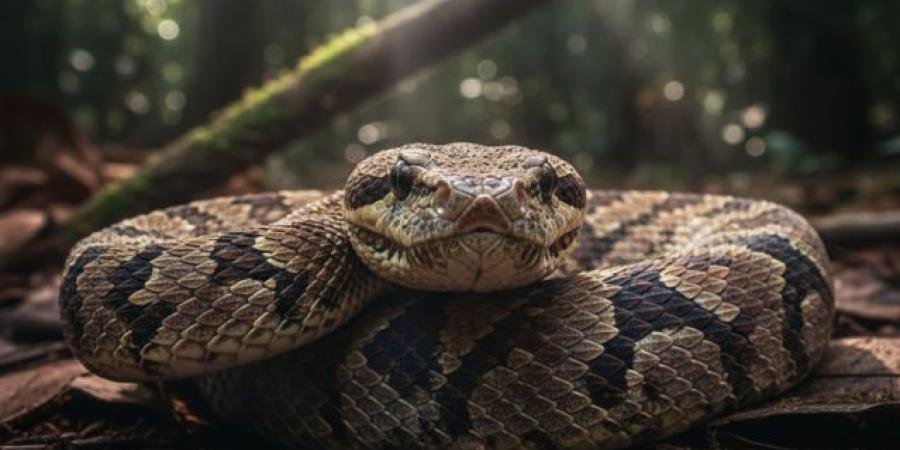نعرض لكم زوارنا أهم وأحدث الأخبار فى المقال الاتي:
The most dangerous snakes on Earth... deadly venom - المصدر 7, اليوم الاثنين 10 نوفمبر 2025 01:27 مساءً
المصدر 7 - They slither silently, strike with precision, and inspire both fear and fascination.
Snakes have existed for millions of years, but a few of them stand out for their deadly venom — capable of killing humans in minutes.
Despite their terrifying reputation, snakes rarely attack unless provoked. Still, knowing which ones to avoid (and respect) could mean the difference between life and death, especially in areas where they’re native.
Here are the seven deadliest snakes on Earth, based on their venom toxicity, aggressiveness, and fatal potential.
1. Inland Taipan (Oxyuranus microlepidotus) — The Fiercest Venom on the Planet
Known as the “Fierce Snake” or “Small-scaled Snake,” the Inland Taipan is often called the most venomous snake in the world.
Where it lives:
Native to central Australia, usually in dry, remote desert regions.
Why it’s deadly:
A single bite contains enough venom to kill up to 100 adult humans or 250,000 mice.
Its venom is a powerful mix of neurotoxins and hemotoxins that paralyze the nervous system and cause internal bleeding.
Science says:
The Inland Taipan’s venom is 50 times more toxic than a cobra’s, according to toxinologists.
Survival chance:
Almost zero without antivenom — symptoms can begin within minutes, leading to respiratory failure if untreated.
Fun fact:
Despite its lethal venom, it’s surprisingly shy and rarely encounters humans.
2. Black Mamba (Dendroaspis polylepis) — Africa’s Fastest Killer
The Black Mamba is the deadliest snake in Africa, feared for both its speed and aggression.
Where it lives:
Sub-Saharan Africa — often found in savannas and rocky hills.
Why it’s deadly:
Its venom contains potent neurotoxins that can kill a person in as little as 20 minutes.
What makes it even more dangerous is its tendency to strike repeatedly, injecting venom with every bite.
Science says:
Before antivenom was developed, the Black Mamba’s bite had a 100% fatality rate.
Other facts:
Can reach speeds up to 20 km/h (12 mph) — nearly as fast as a running human.
Known for raising its front third off the ground and spreading its “hood” like a cobra before striking.
Fun fact:
Its name comes from the dark color inside its mouth — not its skin.
3. King Cobra (Ophiophagus hannah) — The Longest Venomous Snake
The King Cobra is less venomous than some snakes on this list — but its sheer size and venom quantity make it incredibly dangerous.
Where it lives:
India, Southeast Asia, and the Philippines — often in forests or near water.
Why it’s deadly:
A King Cobra can deliver up to 7 milliliters of venom in one strike, enough to kill 20 people or an elephant.
Its venom attacks the nervous system, leading to cardiac arrest within hours.
Science says:
It can grow up to 18 feet (5.5 meters) long — the largest venomous snake in the world.
Fun fact:
Despite its fearsome image, it avoids confrontation and only attacks when threatened, especially during mating or egg-guarding season.
4. Russell’s Viper (Daboia russelii) — Asia’s Silent Assassin
Russell’s Viper is responsible for more human deaths in Asia than almost any other snake — not because it’s the most toxic, but because it’s common and aggressive.
Where it lives:
India, Pakistan, Sri Lanka, and Southeast Asia — often near human settlements and rice fields.
Why it’s deadly:
Its venom destroys blood vessels and causes massive internal bleeding, kidney failure, and shock.
Science says:
One bite can cause severe pain, swelling, and blood clotting disorders within minutes.
Without treatment, death can occur in 2–3 days.
Fun fact:
It’s easily identified by its chain-like pattern of oval spots and loud hissing sound before it strikes.
5. Eastern Brown Snake (Pseudonaja textilis) — Australia’s Everyday Danger
Australia is home to many deadly snakes, but the Eastern Brown is the one locals actually encounter most often.
Where it lives:
Eastern and southern Australia — in both rural and urban areas.
Why it’s deadly:
It’s responsible for over half of all snakebite deaths in Australia.
Its venom causes paralysis, heart failure, and uncontrollable bleeding.
Science says:
Even a small bite (less than 3 mg of venom) can be fatal within 30 minutes.
Behavior:
It’s extremely fast and defensive, often striking multiple times when provoked.
Fun fact:
Juvenile Eastern Browns have more potent venom than adults — small but deadly.
6. Saw-Scaled Viper (Echis carinatus) — The World’s Most Aggressive Snake
Don’t let its small size fool you — this viper kills more people annually than any other snake species combined.
Where it lives:
North Africa, the Middle East, and parts of India and Pakistan.
Why it’s deadly:
Its venom causes severe internal bleeding, clotting issues, and kidney damage.
It’s also highly irritable and quick to strike — sometimes without warning.
Science says:
Despite its smaller venom yield, it compensates with high toxicity and widespread distribution.
Fun fact:
It makes a rasping “sizzling” sound by rubbing its scales together — a warning that danger is near.
7. Coastal Taipan (Oxyuranus scutellatus) — Australia’s Coastal Menace
The Coastal Taipan is closely related to the Inland Taipan and nearly as deadly.
Where it lives:
Coastal regions of northern and eastern Australia, and Papua New Guinea.
Why it’s deadly:
Its venom contains both neurotoxins and procoagulants, causing paralysis and massive internal bleeding.
Science says:
Without antivenom, death can occur within 45 minutes of a bite.
Behavior:
Unlike its inland cousin, the Coastal Taipan is more aggressive and often found near sugarcane fields or coastal forests.
Fun fact:
It’s among the fastest-striking snakes in the world — capable of delivering multiple bites in seconds.
Bonus: What Makes Snake Venom So Lethal?
Snake venom is a complex mix of enzymes, proteins, and toxins designed to immobilize prey.
Depending on the snake, venom can:
Attack the nervous system (neurotoxic)
Destroy tissues and blood vessels (hemotoxic)
Disrupt clotting (anticoagulant)
Trigger shock or respiratory failure
Each species’ venom is uniquely evolved for hunting efficiency — nature’s most deadly chemistry experiment.
Safety Tips: What to Do If Bitten
Stay calm — panic spreads venom faster.
Immobilize the limb and keep it below heart level.
Apply pressure immobilization bandage (if trained).
Do NOT suck, cut, or apply ice.
Seek medical help immediately — time is critical.
Antivenom remains the only effective treatment.







0 تعليق